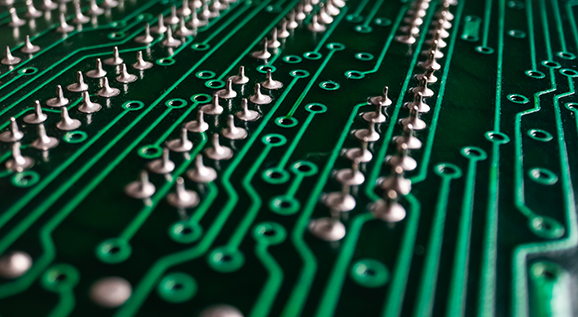Amid the booming development of the electronic information industry, PCBs serve as a fundamental component of electronic products, responsible for connecting components and transmitting electrical signals. According to different application fields, PCBs can be categorized into industrial PCBs and consumer PCBs, which differ significantly in terms of performance, manufacturing processes, cost, and other aspects.

1. Differences in Application Scenarios
Consumer PCBs are primarily used in consumer electronics such as smartphones, tablets, smartwatches, and home gaming consoles. These products are designed for the mass market, with a strong focus on user experience and product visual appeal, and are characterized by fast-paced iteration cycles. Smartphones offer a prime example: major brands typically launch new flagship models every year, featuring ongoing feature enhancements and innovative designs. This fast pace drives high update frequencies for consumer PCBs, which must respond swiftly to market needs and product launch timelines.
Industrial PCBs find widespread application in industrial automation equipment, medical instruments, aerospace, automotive electronics, and other fields. Products in these domains are generally used for industrial production, professional services, or specialized purposes, demanding exceptionally high standards for stability, reliability, and durability. For instance, in industrial automation production lines, equipment often needs to operate 24/7. Industrial PCBs must ensure long-term stable performance to guarantee the smooth functioning of the production line. In aerospace, PCBs must operate reliably under extreme conditions of temperature, pressure, and radiation to ensure the safety and precise control of aircraft.
2. Differences in Performance Requirements
Consumer PCBs focus on meeting the thinness, miniaturization, and multifunctionality requirements of electronic devices. Driven by the growing demand for portability, consumer electronics continue to develop toward thinner and more compact forms, necessitating the integration of more functions into PCBs within constrained spaces, along with high-density interconnections. To meet the demands of high-speed data transmission, such as HD video playback, consumer PCBs must offer strong signal integrity and resistance to electromagnetic interference. However, since consumer electronics typically operate in relatively mild environments, the requirements for properties like high-temperature resistance, corrosion resistance, and vibration resistance are lower compared to industrial PCBs.
Industrial PCBs prioritize reliability and stability above all. Industrial environments are complex and harsh, involving high/low temperatures, high humidity, strong electromagnetic interference, and mechanical vibrations. As a result, industrial PCBs must exhibit excellent resistance to heat, cold, moisture, corrosion, vibration, and shock. For example, in automotive electronics, PCBs installed in engine compartments must withstand temperatures of 125℃ or higher, along with continuous vibrations. In outdoor industrial equipment, PCBs must resist wind, rain, and prolonged UV exposure. Furthermore, industrial PCBs demand extremely high signal transmission accuracy and stability, as any transmission error could lead to severe equipment failures or production accidents.
3. Differences in Process Complexity
To achieve miniaturization and high-density integration, consumer PCBs typically employ advanced technologies such as multi-layer PCBs and HDI (High-Density Interconnect) PCBs, which demand high precision in manufacturing processes. For example, PCBs in smartphones may use HDI PCBs with over 10 layers, requiring precise processes like laser drilling and plating via filling. Although these processes requires high precision, the large production volume of consumer electronics allows for highly automated manufacturing, thereby reducing production costs and improving production efficiency.
While industrial PCBs may not offer the same wiring density as consumer PCBs, they place greater emphasis on meeting specific performance requirements. To meet requirements such as high-temperature resistance and durability in harsh environments, industrial PCBs typically use special materials and processes, such as high-Tg materials, conformal coatings, or the installation of metal shielding cans. These special processes significantly increase manufacturing complexity and difficulty. Furthermore, industrial PCBs are typically produced in smaller batches with a high degree of customization, making mass automation less feasible and driving up production costs.
4. Differences in Cost Control and Lifecycle
The consumer electronics market is highly competitive and price-sensitive. As a result, consumer PCBs are designed to meet basic performance standards while minimizing cost. Manufacturers typically reduce costs through large-scale production, optimized design, and standardized processes. Given the fast-paced product circle, consumer PCBs usually have a short lifespan of about 1 to 3 years, after which they are replaced as the associated products are phased out.
Given the stringent requirements for reliability and stability in industrial applications, industrial PCBs have greater flexibility in cost control and place more emphasis on product quality and performance. Industrial equipment tends to have a long service life, typically 5 to 10 years or more. So, industrial PCBs must also have a long service life to reduce maintenance and replacement costs. In addition, repairs and replacements are usually more complex, requiring higher levels of after-sales service and technical support.
In summary, industrial PCBs and consumer PCBs show clear distinctions in application, performance requirements, process complexity, cost control, and lifecycle. These differences reflect the diverse demands across various industries and continue to drive PCB technology forward through innovation in multiple areas.
HoYoGo is an international, professional and reliable PCB manufacturer. We can provide customers with one-stop services from upstream electronic component procurement to PCB production and processing, SMT patching, PCBA testing, finished product assembly, etc. If you have relevant needs, please send us an inquiry.